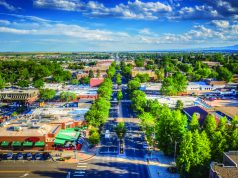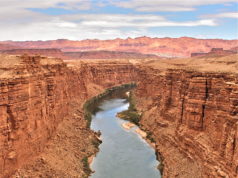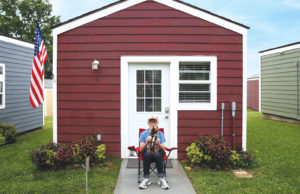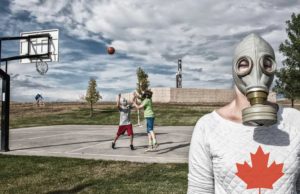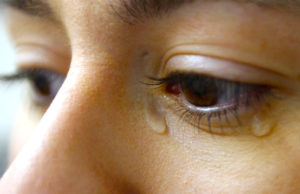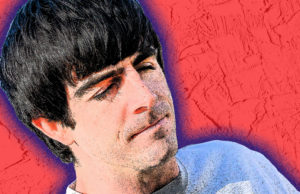DETROIT — With her light-brown skin and Islamic headscarf,
Khadigah Alasry of Dearborn, Mich., said she doesn’t see herself as white.
But the Arab-American is officially classified as such by
the U.S. government, which says that anyone with roots in the Middle East —
including north Africa — is white.
“That’s just weird to me,” said Alasry, 23, born
to immigrants from Yemen.
It’s also weird for thousands of other Americans who say
they don’t fit into traditional categories of race in the United States. As the
2010 U.S. Census prepares to tabulate millions of Americans, the issue of
racial and ethnic identity is being debated as groups push to get their voices
heard.
The census is conducted to get accurate population
statistics that are used to determine the number of congressional seats and
amount of government funding, and to ensure that minorities are not
discriminated against.
The concern is acutely felt in metro Detroit, home to the
highest concentration of Arab-Americans and Chaldeans — Iraqi Christians — in
the United States, according to 2000 census figures.
Having the ancestry question is important because terms like
“white” and “black” are vague and don’t offer much detail,
said ethnic advocates.
“There is no such thing as white culture,” said
Thaddeus Radzilowski, president of the Piast Institute, a Polish-American group
in Hamtramck that is one of 56 census Information Centers in the United States
and the only one in Michigan. Having the ancestry question “provides a
better notion of our pluralistic society and who we are,” Radzilowski
said.
Polish-Americans and members of other European groups, such
as German-Americans are interested in keeping the ancestry question. But the
issue has somewhat faded for them given that they, on average, are more
culturally assimilated and not as visible in the post-Sept. 11 world as
Arab-Americans.
Since the 2000 census and Sept. 11, many Arab-Americans say
they have experienced bias. On the other hand, they also are being recruited
for federal jobs and invited to participate in conversations with top U.S.
leaders as the government finds itself involved in conflicts across the Middle
East and the Muslim world.
But Arab-Americans — who make up about 1.5 percent of
Michigan’s population, based on the 2000 census — won’t be counted as such in
2010. Census officials say part of the reason was to streamline and shorten the
form so that more people fill it out.
Two of the 10 questions will ask about a person’s race —
white, black or Asian — and whether the respondent is Hispanic. But since Arabs
are considered white, they don’t fall under those two categories.
“It’s unfair because we are not treated as white in
society and by the government, but we also don’t qualify as minorities to get
the benefits of some programs” such as minority contracts, said Imad
Hamad, regional director of the American-Arab Anti-Discrimination Committee.
Still, Hamad and other Arab-American leaders are pushing their
people to fill out the census forms because, in the end, they are part of their
wider communities, which would be adversely affected if there’s an undercount.
Whites and blacks are not given the choice to further
specify what their backgrounds might be. In the past, one out of six households
would receive a long form with 53 questions, one of them asking about ethnic
origin.
“We’re aware of the problems with the census,”
Gary Locke, secretary of the Commerce Department, which oversees the Census
Bureau, told a crowd of Arab-Americans in Dearborn. “But we still need you
to participate.”
Locke and census officials said the ancestry question will
be retained under the American Community Survey, which is done every month. But
that survey reaches a much smaller percentage of the population than the full
census.
Arab-Americans and Chaldeans have varying views on the issue
of race, said Andrew Shryock, an associate professor of anthropology at the
University of Michigan in Ann Arbor. His research showed that religion can
affect racial identity, with Arab-American Christians much more likely to see
themselves as white than Arab-American Muslims.
Arab-Americans and Chaldeans are 10 times more likely to
identify their race as “other” as compared with the general population,
according to the Detroit Arab American Study, a survey in 2003 of 1,000 Arabs
and Chaldeans in metro Detroit.
“I’m often told by Arab-Americans that they check
‘white’ on official forms but do not feel that they are ‘white white,’ ”
Shryock said.
In 1997, Mostafa Hefny, an Egyptian-American Detroiter,
filed a lawsuit against the U.S. Office of Management and Budget — which
classified Arabs as white in 1977 — in order to be classified as black. In the
lawsuit, Hefny said, because of his dark skin and kinky hair, he was more
African than blacks such as former Detroit Mayor Dennis Archer. The case was
dismissed in 1998.
Another challenge in getting Arab-Americans and other ethnic
groups to participate in the census is that some may be reluctant to give
personal information to the U.S. government out of a fear the information will
be given to law enforcement, said community advocates. In 2004, federal
officials said that the census had forwarded information on Arab-Americans to a
Homeland Security agency that had requested it.
“This is the first census post-9/11,” said Kim
Hunter of the Detroit office of the Census Bureau. “We don’t know what
effect that will have.”
“There are traditionally undercounted groups out
there,” he said. “So we have to make sure folks are engaged.”
Race, ethnicity and the census
Race: On the 2010 form, question No. 9 asks a person to
indicate his or her race. Choices are “White,” “Black,
African-Am, or Negro,” “American Indian or Alaskan Native,” and
several Asian categories such as “Vietnamese,” “Asian
Indian,” and “Chinese.”
Hispanic: “Hispanic” is not considered a race,
according to the U.S. census. On the 2010 form, question No. 8 asks if the
person is “of Hispanic, Latino, or Spanish origin” followed by
several boxes to check. Some of the choices include “Yes, Mexican, Mexican
Am, Chicano,” “Yes, Puerto Rican,” and “Yes, Cuban.”
Ancestry: On the long form in 2000, given to one of every
six people, respondents were asked to list up to two ancestries, such as Irish,
Polish, Lebanese, etc. But the census tabulated only those ancestries from
Europe and the Middle East. Ancestries from other regions of the world — such
as Asia and Africa — were classified as races.
This question was eliminated for the 2010 census.
Sources: U.S. census, interviews


